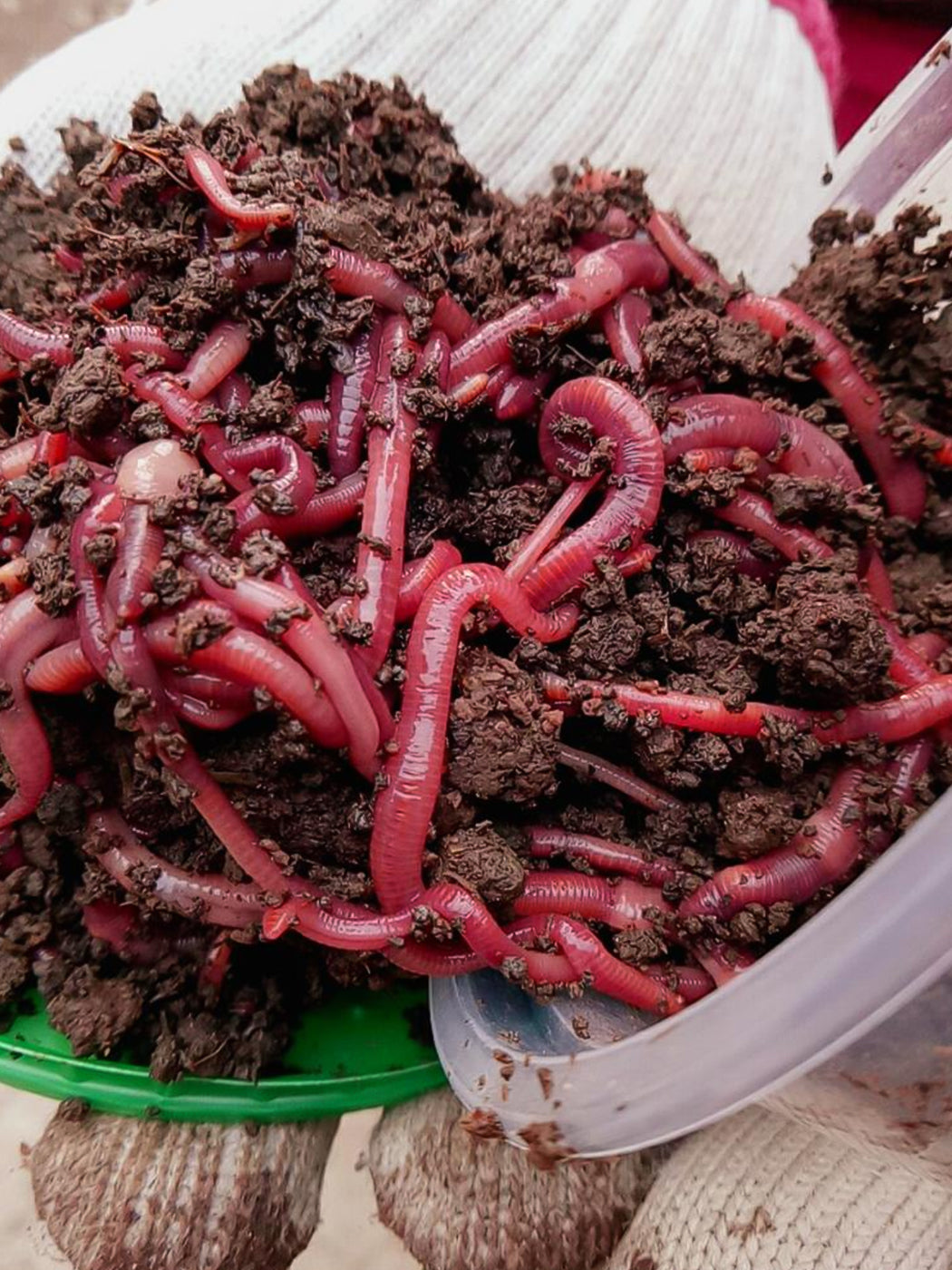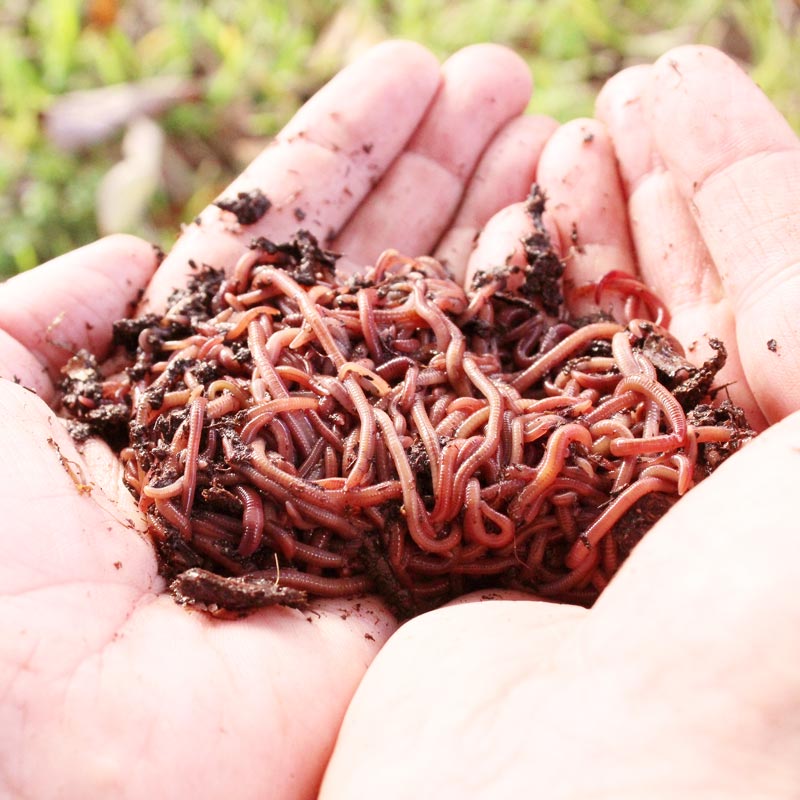Achieve a Greener Lawn with the Help of Red Wiggler Express Lawn Care Treatments
Achieve a Greener Lawn with the Help of Red Wiggler Express Lawn Care Treatments
Blog Article
Open the Keys of Red Wigglers: Your Overview to Composting Success
The assimilation of red wigglers right into composting techniques offers a considerable possibility for enhancing soil health and wellness and promoting sustainability. Comprehending their requirements and habits is crucial for enhancing their possibility, from establishing up a suitable worm container to feeding them the best products.

What Are Red Wigglers?
(Red Wiggler Express)Red wigglers, scientifically recognized as Eisenia fetida, are a species of earthworm primarily utilized in composting because of their exceptional capacity to disintegrate raw material effectively. These worms are identified by their reddish-brown pigmentation and a fractional body, normally gauging in between 3 to 4 inches in length. Unlike other earthworm varieties, red wigglers flourish in rich, organic environments, making them excellent for vermicomposting systems.
Indigenous to North America, they are usually discovered in rotting fallen leaves and compost heap, where they play a crucial role in nutrient recycling. Their adjustment to staying in a damp, cardio environment allows them to take in big quantities of organic waste, simplifying into nutrient-rich castings that improve soil wellness.
Red wigglers replicate swiftly, with a single worm capable of producing a number of cocoons each week, each consisting of multiple hatchlings. Recognizing the biology and habits of red wigglers is crucial for optimizing their potential in composting applications.
Advantages of Using Red Wigglers
Taking advantage of the power of red wigglers in composting supplies numerous benefits that enhance soil health and wellness and advertise sustainable waste management. These remarkable microorganisms effectively damage down raw material, changing kitchen scraps and backyard waste right into nutrient-rich vermicompost. This finished product is exceptionally useful for plant development, as it boosts dirt framework, boosts wetness retention, and enhances vitamins and mineral accessibility.

(Red Wiggler Express)Furthermore, the existence of red wigglers in your composting system can accelerate the composting process, generating top quality garden compost in a portion of the moment contrasted to conventional techniques. The castings created by these worms are additionally brimming with beneficial bacteria that better enhance the soil ecosystem.
Establishing Your Worm Bin
Creating an efficient worm bin is a simple process that can substantially boost your composting initiatives. The very first step is selecting an appropriate container. Worm containers can be made from plastic storage containers, wood boxes, or commercially readily available worm containers. Guarantee the bin has adequate drainage and air flow openings to maintain optimum dampness levels and airflow.
Next, prepare the bed linens product, which works as the worms' habitat. A mix of shredded newspaper, cardboard, and coconut coir functions well, offering a comfortable environment for the worms. Go for a bed linens depth of about 4-6 inches. Dampen the bed linens gently, ensuring it looks like a damp sponge without excess water merging at the bottom.

Feeding Your Red Wigglers
To guarantee the health and wellness and efficiency of your red wigglers, it is vital to offer them with a balanced diet regimen that satisfies their dietary demands. Red wigglers thrive on a varied array of organic materials, which not just provide required nutrients yet likewise promote reliable composting.
Begin by incorporating kitchen area scraps such as vegetable peels, fruit cores, and coffee premises. Avoid citrus fruits, onions, and garlic, as these can be damaging to worm wellness. Furthermore, present shredded paper, cardboard, and dry leaves to produce a well-aerated atmosphere.
Feeding regularity should be monitored; generally, worms can eat half their body weight in food weekly. It is important to stay clear of overfeeding, as excess food can bring about unpleasant odors and draw in insects. An excellent technique is to add food in little amounts, enabling worms to refine it before introducing more.
Preserving wetness degrees is also important; the bed linen ought to be moist yet not soaked. Lastly, make sure to regularly check the temperature and pH levels of the bin to make sure an optimum environment for your red wigglers, eventually enhancing their composting effectiveness.
Harvesting and Utilizing Compost
An effective composting process with red wigglers finishes in the rich, dark compost called vermicompost, which can substantially improve soil wellness and plant growth. Collecting this nutrient-dense product normally occurs every 3 to six months, depending on the size of your system and the amount of raw material being refined.
To collect, gently separate the garden compost from the worms and any kind of undecomposed materials. One efficient approach involves relocating the components of the container to one side and adding fresh bed linen and food to the void, motivating the worms to migrate. After a few days, the compost can be collected from the opposite side.
It is vital to utilize vermicompost correctly to optimize its advantages. It can be used as a top dressing for yard beds, combined right into potting dirt, or brewed right into a nutrient-rich liquid fertilizer understood as "worm tea." This application technique assists to deliver necessary nutrients directly to plant roots, advertising much healthier development. By including vermicompost into your gardening regimen, you not only reuse natural waste yet additionally produce a successful ecological community that sustains lasting gardening techniques.
Conclusion
In recap, red wigglers work as remarkable allies in composting efforts, changing organic waste into nutrient-rich vermicompost (Red Wiggler Express). Their unique organic characteristics and effective waste handling capacities add dramatically to lasting gardening methods. By Red Wiggler Express understanding the optimal problems for their habitat, feeding demands, and compost harvesting techniques, garden enthusiasts can boost soil wellness and promote plant vigor. Embracing vermicomposting not just reduces land fill waste however additionally cultivates a much more eco accountable technique to gardening and resource administration.
Report this page